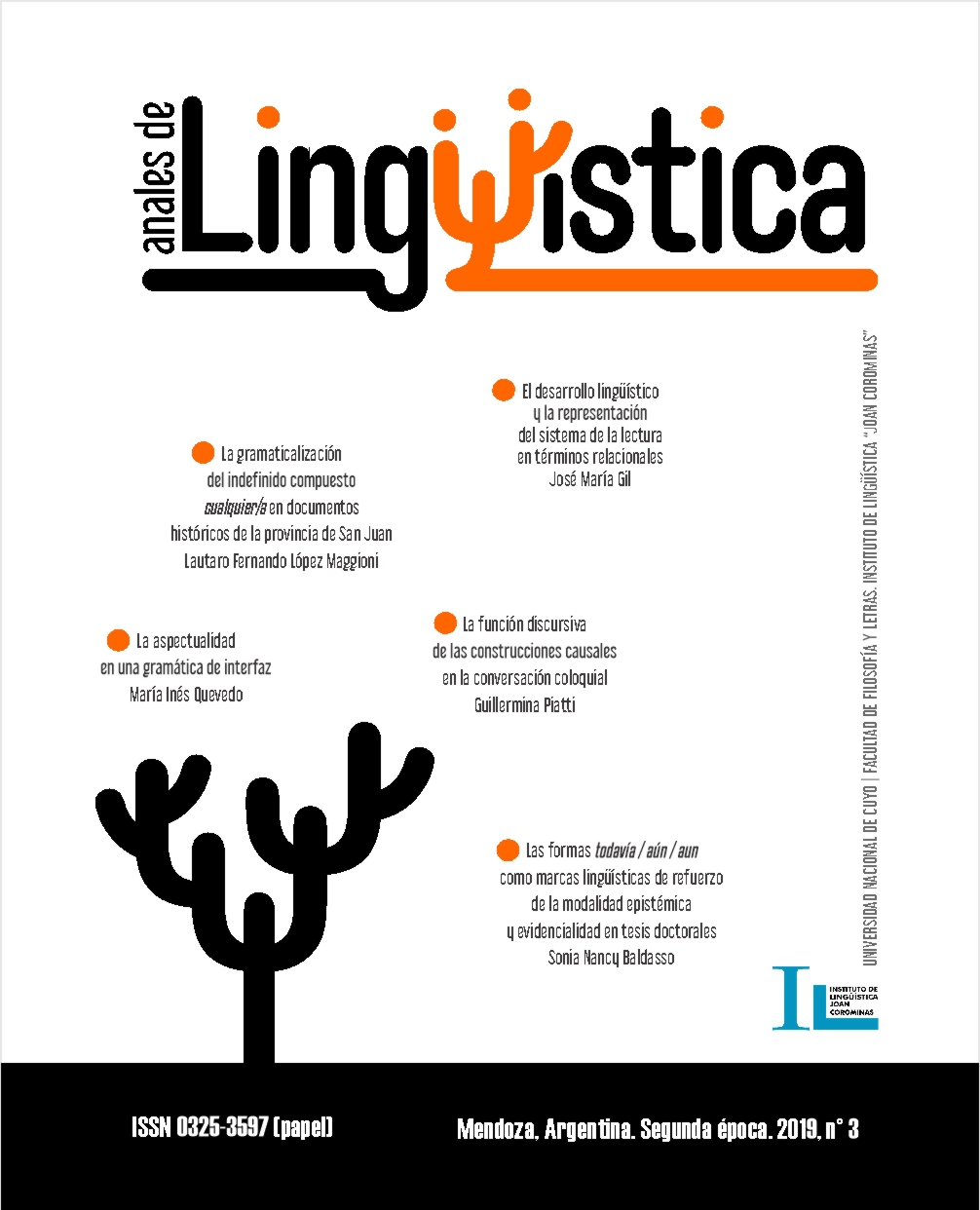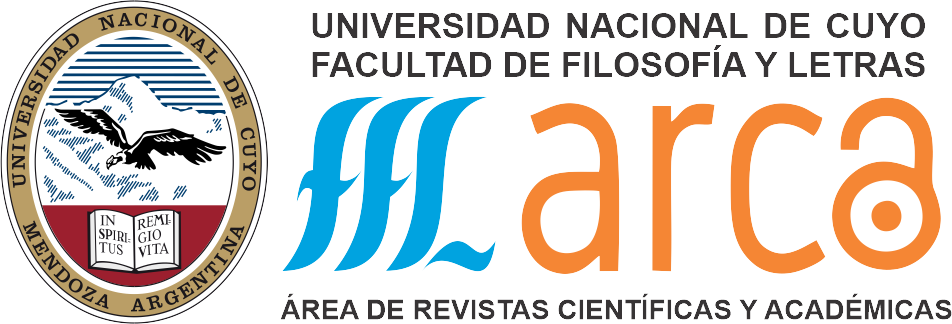The Grammaticalization of the Indefined Compound Cualquier/a in Historical Documents of The Province of San Juan
Keywords:
Grammatization, Undefined Compounds, Cognitive Linguistics, Province of San JuanAbstract
This paper addresses the diachronic analysis of the undefined compound cualquier/a in the variety of Spanish in San Juan. The general objective is to investigate the grammaticalization state of the compound between the 17th and 19th centuries, its productivity and the meaning it provides in its variants - apocopated and full - during the selected temporary cut. A corpus of 570 historical documents kept in different repositories of the province of San Juan was selected for this purpose: legal documents dated from 1601 to 1800, belonging to the Fondo Histórico and the Fondo Tribunales of the Archivo General de la Provincia de San Juan; and news from the newspapers "El abogado federal (1836) and El Zonda (1862), belonging to the Museo Provincial Agustín Gnecco archive. It is hypothesized that cualquier/a, due to its high referential flexibility, should have prevailed against quienquiera in use. This research is carried out from the approach of Cognitive Functional Linguistics, theoretical framework that conceives the language as an instrument that symbolizes the speakers conceptualizations, which are conditioned by their corporeal experiences of both the external world and the relationship they have with that world. As language uses shared conceptual structures, conventionalized among speakers of the same speaking community, we can give meaning to other’s communicative intention because we have immeasurable conceptual structures compatible with those of our interlocutors.
References
Bosque, I. & Demonte, V., dir. (1999). Gramática Descriptiva de la Lengua Española.Madrid: Espasa.
Company Company, C. (2003). La gramaticalización en la historia del español. Gramaticalización y cambio sintáctico en la historia del español. Medievalia (número monográfico), 35, 1-62. Disponible en: http://www.concepcioncompany.com/2003/08/2003-la-gramaticalizacion- en-la.html
Company Company, C. (2009). Parámetros de gramaticalización de los indefinidos compuestos en español. En: Sánchez Miret, F., ed., Romanística sin complejos. Homenaje a Carmen Pensado (pp. 71-104). Berna: Peter Lang. Disponible en: http://www.concepcioncompany.com/2012/07/2009g-parametros-de- gramaticalizacion.html
Company, C., dir. (2006). Sintaxis Histórica de la Lengua Española, Vol. 2, Cap. 10, 1073-1219. México: Fondo de Cultura Económica UNAM.
Cuenca, M. J. & Hilferty, J. (1999). Introducción a la Lingüística Cognitiva. Barcelona: Ariel.
Cuervo, R. J. (1886 [1892]). Diccionario de Construcción y Régimen de la Lengua Castellana. Tomo II. C-D. Paris: A.
Roger y F. Chernoviz Libreros Editores. De Miguel, E. (2009). Panorama de Lexicología. Barcelona: Ariel.
Elvira, J. (1985). "Qual con antecedente en español antiguo", Revista de Filología Española, XLV, 305-316.
Menéndez Pidal, R. (1929). Manual de Gramática Histórica del Español, Madrid: Espasa Calpe.
Palomo, J. (1934). The relative combined with querer in old Spanish. Hispanic Review, Vol. 2, No. 1, University of Pennsylvania Press, 51-64. Disponible en: http://www.jstor.org/stable/469652m .
Palomo, J. (1936): Si quiere y sus variantes. Hispanic Review, IV/1, 66-68. Disponible en: http://www.jstor.org/discover/10.2307/469984?id=3737512&uid=2&uid= 4&sid=21102983977863
Real Academia Española de la Lengua. (2010). Nueva Gramática de la Lengua Española. Madrid: Espasa.
Rivero, M. L. (1986). Dialects and diachronic syntax: Free relatives in Old Spanish. J. Linguistics 22. Great Britain, 443-454.
Rivero, M. L. (1988). La sintaxis de qual quiere y sus variantes en el español antiguo. Nueva Revista de Filología Hispánica. Tomo XXXVI, Núm. 1, Centro de Estudios Lingüísticos y Literarios. El Colegio de México, 47-73.
Downloads
Published
How to Cite
Issue
Section
License

Esta obra está bajo una Licencia Creative Commons Atribución 2.5 Argentina.
Los/as autores/as que publican en esta revista están de acuerdo con los siguientes términos:
1. Los/as autores conservan los derechos de autor y garantizan a la revista el derecho de ser la primera publicación del trabajo bajo una licecncia Creative Commons Atribución 2.5 Argentina (CC BY 2.5 AR) . Por esto pueden compartir el trabajo con la referencia explícita de la publicación original en esta revista.
2. Anales de lingüística permite y anima a los autores a difundir la publicación realizada electrónicamente, a través de su enlace y/o de la versión postprint del archivo descargado de forma independiente.
3. Usted es libre de:
Compartir — copiar y redistribuir el material en cualquier medio o formato
Adaptar — remezclar, transformar y construir a partir del material para cualquier propósito, incluso comercialmente.












